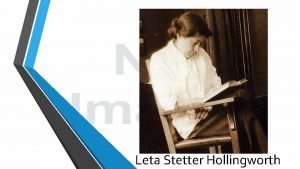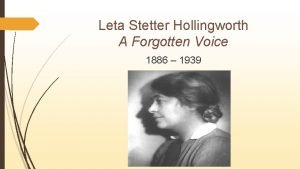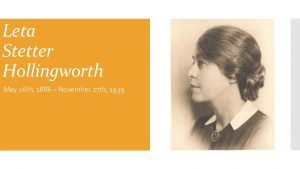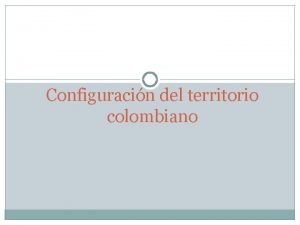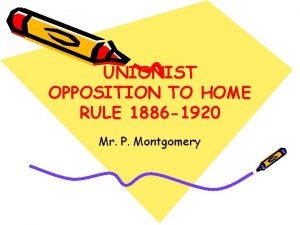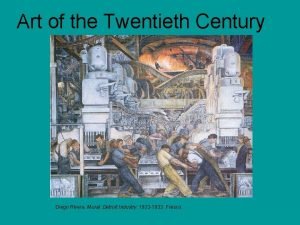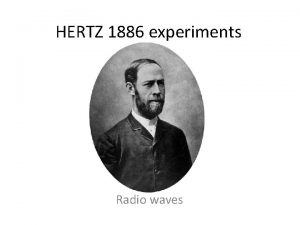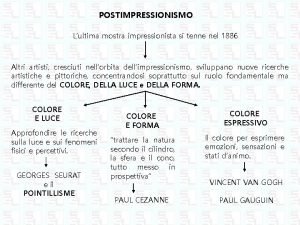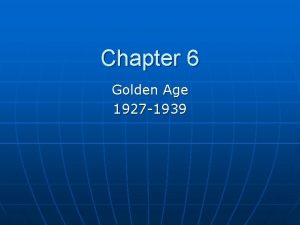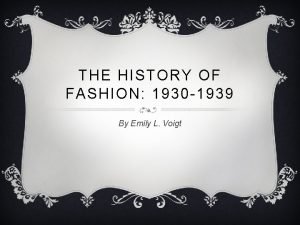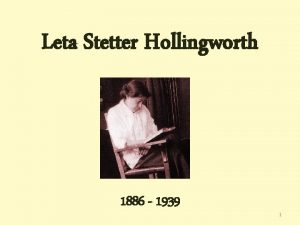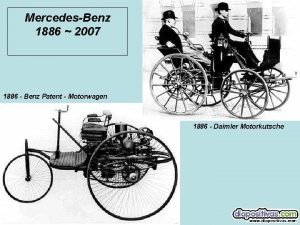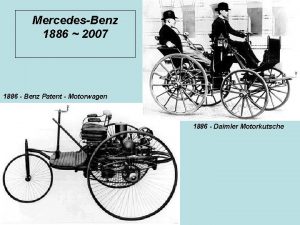Leta Stetter Hollingworth A Forgotten Voice 1886 1939



























- Slides: 27

Leta Stetter Hollingworth A Forgotten Voice 1886 – 1939

Nebraska v Earthen Dugout home (left) v Later, a sod brick house (right) v Westward movement: railroad offered economic opportunities, and the homestead act offered land ownership. v Population increased from 2, 700 to 450, 402 in just 6 years. v Chadron & Valentine

Family v Mother: Margaret “Maggie” Elenor Danley: (1862 – 1890) v Father: Johnny Stetter: (1855 – 1943) v 3 Children: Leta (oldest), Ruth (middle), Margaret (youngest). v Mother died dies the day after giving birth to Margaret. v Leta’s giftedness. v Abandoned by father, “The Candy Man”. v Maternal Grandparents: Mary & Samuel Danley, take in the girls and care for them over the next 10 years. v Sister’s develop a very close bond due to their mutual losses. v Leta is freed and exilerated by the Danley homestead and the girls love their grandparents.

Tragedies Continue v The 3 tragedies. 1) Lost Danley prairie home. 2) Father remarries an immigrant dressmaker from England, Fannie Barling. 3) Leta’s 2 young cousins die in a suspicious house fire that may have been started by their own father, Leta’s Uncle! v Leta ends her childhood at 10 years old. v Danley’s lose prairie homestead and move girls to Colorado. v Father moves girls back to Nebraska to live with him & step-mother. v Fannie Barling / Step-monster! v Family & School saviors.

Father Relationship v Like Father, like Daughter • Physical resemblance. • Unconventional ways of doing things. • Cared very little of what others thought of them. • Kind and caring nature. v Johnny insisted the girls go to college. v Leta flourished intellectually and began college at the University of Nebraska in 1902.

University of Nebraska v (1902 – 1906) 16 – 20 years old. v Only 4% of U. S was attending college; 36% were female. v Edward Lee Thorndike opinion on women’s rights to an education. “Of the hundred most gifted individuals in the country, not two of would be women… Thus, thought women should capture the teaching profession, they would hardly fill its most eminent positions… and even should all women vote, they would play a small role in the senate. ” v Extensive extra curricular campus involvement v Phi Beta Kappa induction included Leta and her future husband, Harry Hollingworth.

“Holly” v Harry “Holly” Levi Hollingworth (1880 – 1954) v Leta (17 years old) Harry (23 years old), when they met. v Commonalities: abandonment issues, mothers died at a young age, difficult/abusive fathers, maternal grandmothers that cared for them, deprived of love much of their lives, impoverished upbringings, and despite all of this they felt feelings of responsibility and closeness with much of their family all of their lives. v Holly completed High School at 16 years old. Struggled to get into college for 7 years. v Entered University of Nebraska (1903) and met Leta. v Their love blossomed from 1903 -1904, and in 1906 (Leta, 20 years old) Leta agreed to marry holly. v Letter to Holly from Leta: “Sometimes I ponder and ponder to think any man could ever made me love him trustingly enough to marry him. ”

Post- Undergraduate Early Work v Dewitt Nebraska, 1906, First teaching position/assistant principle/janitor! v Taught 7 different subjects to K-12 classes. v Holly became Principle of Fremontt H. S. 100 miles away. v 1907, Professor James Mc. Keen Cattell of Columbia University offers Holly a graduate assistantship in psychology. Holly takes amazing opportunity. v Leta relocates to Mc. Cook H. S. for a better paying teaching position. v 2 subjects instead of 7! v Spring, 1908, Leta and Holly decide to marry. v Leta & Holly marry on Dec. 31 st, 1908. Leta is moving to New York!

New York v 1 million immigrants came to New York in 1909. v 47 story buildings were being built. v Movies and opera were playing around the city. v Cars were on the streets, telephones were accessible, and a new subway was built. v Social Change was EVERYWHERE!

Feminism v Crippling Gender Bias v She responded by co-creating groups such as: • The Heterodoxy Club – for social change. • The Feminist Alliance – for social change. v Active member in the Woman Suffrage Party – devoted to earning women the right to vote. v Later sex differences research v Made life long friends.

“Staying at home, eating a lone Pork Chop” – Leta H. v Leta & Holly struggled on Holly’s $41. 66 assistant professor salary. v Leta couldn’t get a teaching position despite her qualifications. v Board of Education and field professionals block her from teaching and disregard her abilities BECAUSE she is a women. v Leta was infuriated and depressed by this. Holly writes of this time, “L. S. H would unaccountably burst into tears. She was never quite able to tell me why. Later on she said it was because she could not bear being strong and able, with a good mind a sound education, and yet being so unable to contribute materially toward our welfare. ” v Holly took on additional work and paid for Leta to enroll in Graduate classes. v Holly was hired by Barnard College as an instructor after receiving his PH. D IN 1909 at the age of 29. v Leta was 23, and unemployed.

Coca Cola Study v 1909, Coca Cola charged in violation of Pure Food and Drug Act. v 1911, Coca Cola hires psychologist to conduct study on the behavioral effects of caffeine on humans. v James Cattell turns down opportunity. v Harry. H takes the job for the money. But he doesn’t have time to conduct the research. He hires Leta. v Leta’s experimental designs are amazing. v Harry testifies in court using Leta’s research. v 1916, U. S. Supreme Court rules that caffeine is indeed added to Coca Cola, so it moves to a retrial. v Coca Cola changes formula by reducing caffeine by 50%, then argues against retrial.

Graduate School v 1911 – 1913: Leta and Holly study under the greats. v James Cattell: Advocate for human behavior studies. v Edward Lee Thorndike: Leta’s greatest influence with his unconventional teaching methods. v John Dewey: Emphasised the importance of teaching students “how” to think, not “what” to think. v Naomi Norsworthy: First women ever admitted to Teacher's College to get her Ph. D in psychology, and she remained as a faculty member. v Additional influential figures: William Heard Kilpatricky, Patti Smith Hill, to mention a few.

Stanford-Binet v 1913, Leta earns her Masters degree. v The Clearing House for Mental Defectives. v Administer the new Binet-Simon mental test to clients. v From France to the U. S. into Lewis Terman’s hands. He altered may of the tests questions and format. v Psychopathic Services at Bellevue, 1915. v This is where Leta gained a better understanding of sex differences through research.

Psychology of Women Science set to destroy sex biases. v 1913 – 1916, Leta devoted her published works to this subject. v Leta was working towards her Ph. D. v Leta discredited many theories thought as “facts” about women at that time. v Doctoral Dissertation, “Functional Periodicity. ” v Leta earned her Ph. D through her work on sex differences of that time. v

The Heterodoxy Club v 1912 – Leta and 24 other women founded Heterodoxy Club. v Met every other week for 28 years. v Radical & intellectual members. v The woman made up wide ranger of political views, relationship status’s, and cultural experiences. v The Feminist Alliance: “Feminism is a movement which demands the removal of all social, political, economic, and other discriminations which are based upon sex, and the award of all rights and duties in all fields on the basis of individual capacity alone. ”

Birth Control & Eugenics v 1910 – 1920: Birth Control movement. v Leta was an advocate of birth control for SOME populations. v Environment AND more importantly, heredity. v Leta was in favor of involuntary sterilization for mentally deficient. v Selective Breeding concepts were popular at that time. v Leta and Holly never had children.

A Child Called “E” v 1916 – Leta was appointed as Teacher’s College instructor of Educational Psychology. v 8 year old “Genius. ” v IQ of 187 & placed in Galton’s Class X of able persons – more than 6 grades above his average. v Leta had an amazing connection with “E”, as she had found an intellectual counter part to her gifted status. Her interaction with “E” ignited her interest in gifted children for the rest of her life.

Exceptional Children 1916 -1922: Leta’s publications – cognitively disabled children. v Teachers College School for Exceptional Children: Leta’s first over sight research project for learning disabled analysis and academic improvements for learning disabled youth. v Building and funding disappointments. v Lesson learned. v

The Whole Child Approach v Leta believed strongly in a well rounded approach towards educating children that focused on core curriculum standards as well as specialized ability centered focus on children that exhibited innate talents. v Regular classroom & specialized classes for both students with severe cognitive deficits, and profoundly gifted children. v 1916 – 1919, a 3 year experiment (conducted by Lewis Terman) pre-cursered any of Leta’s specialized classes for the gifted. v Public School 64 v Data retrieved from P. S. 64, was not generalizable to public.

Public School 165 v 1922 - Leta’s first experiment comparing gifted children to exceptionally gifted children. v Focus on enrichment of the gifted children rather than acceleration through grades. v https: //www. youtube. com/embed/dhnaa. Fq 1 b. WI? autoplay=1

Leta’s 5 Themes 1) Children need to e taught according to their capacities. 2) Not all gifted children are alike. 3) Gifted children know more than they can do, and their abilities are not alike in all areas. 4) Heredity plays a dominant role in transmitting of high IQ’s, but environment contributes to what one does with their IQ. 5) Children with 130+ IQ’s and especially 180+ IQ’s have social adjustment problems. v Teacher’s College fails to support Leta’s research.

Speyer School “Public School 500” v 1934 – Leta was given the go ahead to start planning for her dream school. v Fully funded by Teacher’s College and the Board of Education, Speyer School or P. S. 500 opened Feb. 1936. v Population – 225 students, nine classes of 25 students each, and 23 different national backgrounds represented. v Leta’s curriculum at Speyer School was not very different from gifted educational practices today.

Speyer Graduates v Longitudinal studies accomplished, but not by Leta. v 1941, a little after Leta’s death; Speyer School Closed.

Loving & Working v Busy professionals & socialites. v Harry chaired Barnard College Psychology Dept. v 1927 – Harry elected President of American Psychology Association. v Leta & Holly managed healthy careers, social, and economic lives together in their 31 years of marriage. v “Hollywyck” – 2. 5 acre land in home where Harry built their country home. v Grew distant later in their marriage. v Josefine Weischer – German immigrant at “Hollywyck” residence as the maid. v 7 years after Leta’s death, Holly married Josefine. v Leta’s illness.

Letas Legacy v 1916 -1939: Leta was a faculty member of Teacher’s College. v She was listed in American Men of Science. v Expert researcher. v Committed to developing & professionalizing school psychology. v Advocate for the recognition of psychology as a subject separate from physician oversight. v Influenced many individuals, notably Carl Rodgers. v She published 80 scholarly articles, and 9 books. v Received honorary doctor of law degree right before she died.

Questions v Leta argued that since human beings were not created intellectually equal, not all children should be educated in the same way? Do you agree? Disagree? v How do we currently address this assertion in academic environments today?
 Leta stetter hollingworth
Leta stetter hollingworth Heterodoxy club
Heterodoxy club Hollingworth preschool
Hollingworth preschool 1830-1886
1830-1886 Devastación
Devastación Tower bridge 1886
Tower bridge 1886 Home rule 1886
Home rule 1886 1886 modern compound light microscope
1886 modern compound light microscope Msn 1886
Msn 1886 What country did impressionism originated from
What country did impressionism originated from 1886
1886 Hertz 1886
Hertz 1886 University of delaware virtual microscope
University of delaware virtual microscope Kirjanik 1898-1978
Kirjanik 1898-1978 Il girotondo delle piccole bretoni
Il girotondo delle piccole bretoni Rede brasil supermercados
Rede brasil supermercados Slovenski ekspresionizem
Slovenski ekspresionizem Léta páně pravopis
Léta páně pravopis 1909 analiza pjesme
1909 analiza pjesme Leta se
Leta se Big beat 60 léta
Big beat 60 léta Shingelfrisyren
Shingelfrisyren Hrvatsko pitanje 1939
Hrvatsko pitanje 1939 1939
1939 Golden age of aviation 1927-1939
Golden age of aviation 1927-1939 1939
1939 1930-1939 fashion
1930-1939 fashion Kongres melayu 1939 dan 1940
Kongres melayu 1939 dan 1940
